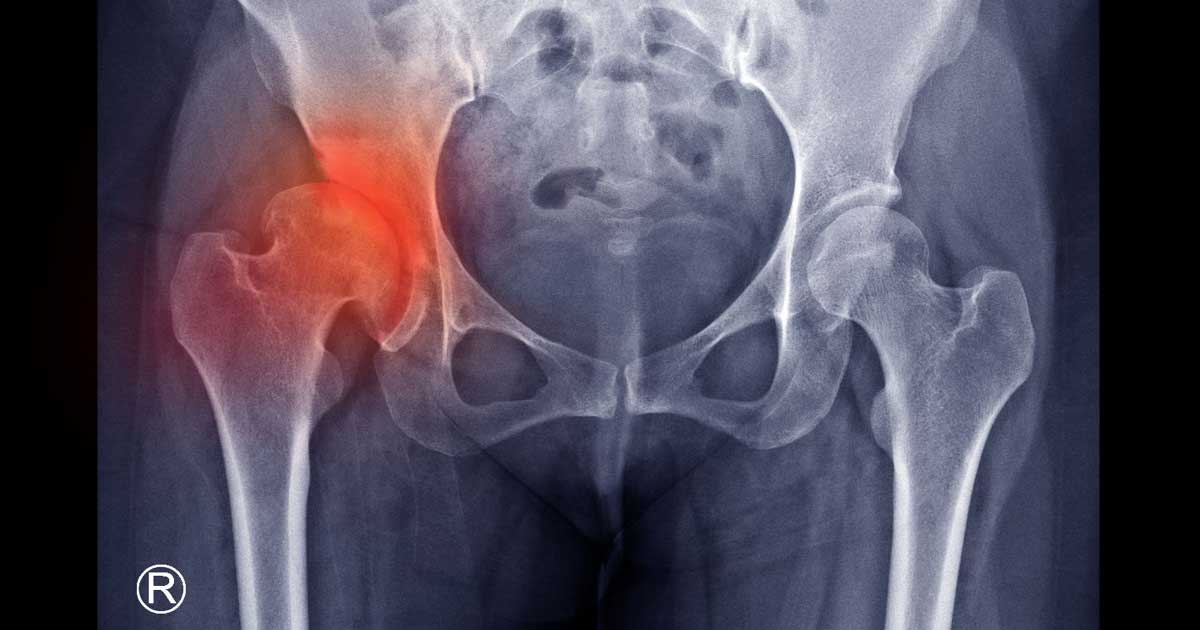Former President Carter (the oldest living former president in United States history), had surgery to repair his fractured hip and once joked that turkey season was ending soon and that he’d be missing out on his final days to hunt with his broken hip.
Unfortunately, former President Carter isn’t alone. Every year, hundreds of thousands of people fracture their hips, most of them elderly and most of them women. Hip fractures can also complicate existing health issues the elderly face and can be a cause of early death for many patients [1].
But what happens when you break a hip, and how can you help prevent a hip fracture?
How Common Are Hip Fractures?
A hip fracture is when you break the femur of your hip joint. Your hip is a ball and socket joint, which is where your femur (thighbone) meets your pelvic bone. When you break the ball part of the top of your femur, it’s called a hip fracture.
More than 300,000 older Americans are hospitalized for hip fractures every year, and 95 percent of these fractures are caused by falling [2].
Hip fractures are more common in women than in men, partially because women are more likely to have osteoporosis, a disease that causes bone density to diminish, therefore making bones more fragile and significantly increasing the chances of breaking a bone [3].
Although common, hip fractures require emergency medical attention and will almost always require a surgical procedure to repair, and recovery can take weeks if not months, depending on the individual [4].
Avoiding a Hip Fracture Inside and Outside Your Home
Hip fractures are most commonly caused by falling, typically in people over the age of 50. In up to 25 percent of cases, the person won’t be able to live independently even after they recover, although this is more likely among people with numerous medical issues than among otherwise healthy people [5].
To avoid a hip fracture, know the areas of danger both inside and outside your home or your loved one’s home [6]. Home is where most people experience a hip fracture, with kitchens, bedrooms, bathrooms, and living rooms all being prime areas to fall. To help prevent falls, be sure to:
- Keep your floor clear of clutter, including wires, throw rugs, and anything else that could cause a person to trip.
- Make sure rugs have a non-slip backing (you can also purchase one separately and place underneath), and that carpet is properly fixed to the floor.
- Consider installing grab bars in the bathroom, including around the bath, shower, and toilet.
- Ensure all stairs have railings on each side, are well-lit, and free of clutter.
- Keep frequently used items within reach of your loved one if they have limited mobility.
- Always clean up any spills immediately, and ensure outdoor walkways are well-drained and cleared in the event of snow or ice.
Outside your home, you can prevent falls by wearing the proper footwear (low or no heel with rubber soles) and be sure to use handrails on stairs. It may also be helpful to have a hands-free way to carry your personal items with you, such as in a backpack, fanny pack, or cross-body bag to keep your hands free to utilize railings.
What to Do If You Start Falling
In the event that you begin to fall and can’t stop yourself, try not to brace yourself against the fall, as this can cause more harm. Try to remain relaxed and let your body fall naturally instead of fighting it (easier said than done, for sure)!
Once you’ve fallen, take your time getting up. Try to assess if you’ve been hurt and where. If you’re able, roll onto your side, then get on your hands and knees and crawl to the nearest chair, taking breaks between each step to regain your strength [7].
If you’re hurt, call emergency medical services or seek urgent care to ensure you didn’t break anything or another type of injury.
How to Know If You’ve Broken Your Hip and Diagnosis
While most patients who experience a hip fracture will have some type of pain, there are patients who’ve broken their hip and only complain of a vague discomfort [8].
Other symptoms include pain in your hip, knee, or lower back, inability to stand or walk, and bruising and swelling [9].
Hip fractures are diagnosed with an x-ray, MRI, or CT scan. In order to repair your hip, pins will need to be placed to help keep the joint stable, or a partial or total hip replacement may be necessary, depending on the type of fracture.
Unfortunately, complications such as blood clots, pneumonia, muscle wasting, and even cognitive decline aren’t uncommon in older patients [10].
Minimize Your Risk for a Broken Hip!
As you can see, hip fractures are very serious and not to be taken lightly. While you can ensure your home environment is safe and take extra precautions when out in public to prevent a hip fracture, what are some other risk factors to be aware of [11]?
- Not getting enough physical exercise
- Being tall
- Having problems with vision or memory
- Excessive alcohol or caffeine consumption
- Having a lower body weight
- Smoking
- Living in an assisted-living facility
While, of course, there’s not much one can do about being tall and slim, you can do your best to get daily exercise, reduce your alcohol consumption, and stop smoking. You can talk with your doctor more about your risk for falls or your concerns about a loved one who may be at risk.
Despite being sad about missing out on the rest of turkey season, former President Jimmy Carter has a bit more to worry about with recovering from hip surgery. We wish him a speedy recovery!
Sources:
- https://www.ncbi.nlm.nih.gov/pubmed/26016287
- https://www.cdc.gov/homeandrecreationalsafety/falls/adulthipfx.html
- https://www.iofbonehealth.org/what-is-osteoporosis
- https://www.mayoclinic.org/diseases-conditions/hip-fracture/symptoms-causes/syc-20373468
- https://www.health.harvard.edu/a_to_z/hip-fracture-a-to-z
- https://www.nsc.org/home-safety/safety-topics/older-adult-falls
- https://www.adventhealth.com/blog/what-expect-when-you-break-a-hip
- https://www.aafp.org/afp/2003/0201/p537.html
- https://www.cedars-sinai.org/health-library/diseases-and-conditions/h/hip-fracture.html
- https://www.cedars-sinai.org/health-library/diseases-and-conditions/h/hip-fracture.html
- https://stanfordhealthcare.org/medical-conditions/bones-joints-and-muscles/hip-fracture/causes/risk-factors.html

